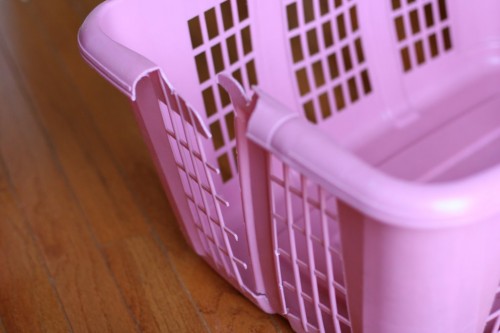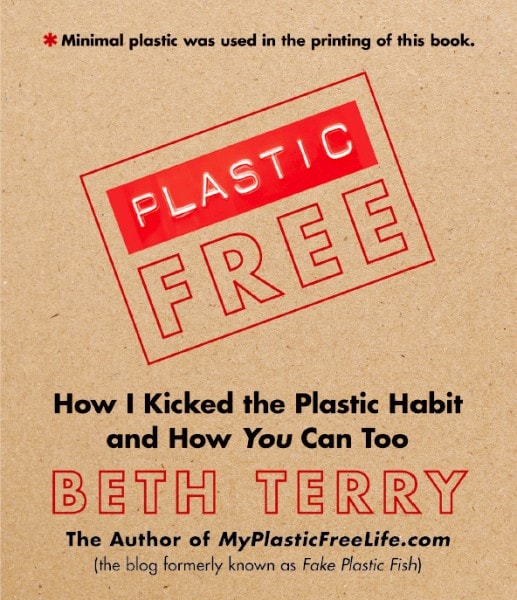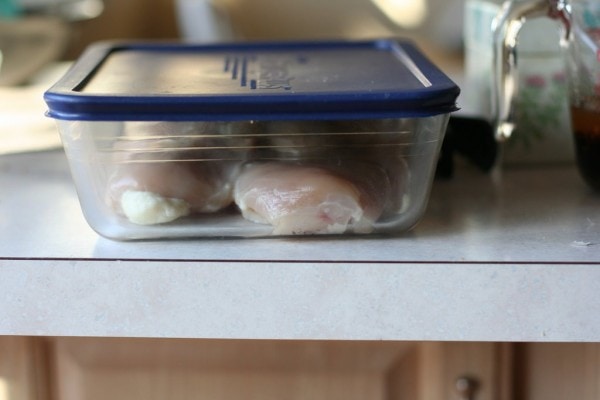Beth Terry of My Plastic Free Life has just written a book about, well, plastic free living, and she offered me the opportunity to read a review copy.
Interestingly enough, in light of our discussion on Monday about Kindles, I read it by borrowing her copy on my Kindle.
(She did send me a PDF version, but I vastly prefer reading longer ebooks on the Kindle instead of on the computer screen.)
I’m not exactly sure about the mechanics of loaning someone a book on Kindle, but on the receiving end, it was easy. I got an email from Amazon letting me know that my book was available, and I logged on and downloaded it.
The loan was just for two weeks, but I had no trouble finishing the book in that amount of time…it’s a well-written, informative, and practical book.
In the first chapter, Beth outlines the main problems with plastic. Among other things, it takes oil to produce, it’s not biodegradable, the production of plastic produces pollutants (look at me alliterating there!), and plastic contains chemicals that aren’t healthy for us.
And she also talks about why recycling isn’t a magic bullet, which is so important. I think all too often we blithely throw things into the recycling bin, thinking that the impact of our plastic is somehow reduced to zero.

The first two plastic enemies Beth addresses are plastic grocery bags and bottled water. I’m already an avid cloth-bag shopper, and I am so not a fan of bottled water.
So, I was feeling pretty good up to that point.
And she talked about waste-free lunch packing, and I felt pretty good there too (Mr. FG’s lunch is full of stainless steel and glass food containers with an occasional plastic one.)
But the next topic was grocery shopping, and I didn’t skate through that chapter nearly so well.
If we graded plastic use on a curve, my groceries would probably get a pretty good grade. I don’t buy individually wrapped items, I cook a lot of our food from scratch, I don’t buy prepared meals, I don’t buy single-serving items, I use reusable produce bags or leave my produce bare when possible, and I bring a glass container to buy my chicken.
But my shopping is nowhere near zero-waste or even zero-plastic.
The problem is, I’ve already done most of the easy-ish things to reduce the plastic in my groceries. The steps I’d have to take to further reduce my plastic usage are either hard or expensive. For example, I’d have to drive to a store that had a great bulk bin selection and which would let me bring my own containers, or I’d have to find a dairy source that used returnable glass jars, and so on.
I don’t really care that you can’t find individually-portioned foods in plastic-free containers, but I do hate that it’s so hard to buy bare ingredients without plastic.
I make my own yogurt in mason jars, but my milk comes in a plastic jug.
I make my pancakes from scratch, but the buttermilk comes in a wax (or plastic?) coated container. And even if I made my own buttermilk, I’d still be starting with milk from a plastic jug.
It’s enough to make you feel pretty discouraged.
Which brings me to something I appreciated about this book…Beth understands very well the frustration comes with trying to live with less plastic. In fact, she devoted a whole chapter to fighting discouragement and keeping your motivation up.
And there’s another chapter about why our personal choices matter. Sometimes when I’m thinking about ways to reduce my trash output, I feel discouraged because it seems like what I do doesn’t make a difference. So what if I compost my produce scraps and drink tap water when our streets are lined with full trash cans and recycling bins every week?
But Beth’s book reminded me that individual choices do matter, because great change can come about when many individuals make the right choice. My choices alone won’t clean up the ocean, but my choices along with other people’s choices can indeed.
If you’re already striving to limit the amount of plastic in your life, that’s great! I think Beth’s book will inspire you to keep on trucking.
If you’re a person who hasn’t really thought much about this before or who feels completely overwhelmed at the thought of trying to live without plastic, I think this book is perfect for you. Beth has a very not-preachy tone, and she does NOT expect everyone to live entirely without plastic. She’s happy to encourage even a little bit of change, and this book offers a lot of baby steps that you can take.
You can buy your copy of Plastic-Free on Amazon (just $11 for the Kindle version), or of course, you could check to see if your library has a copy. If they don’t, ask them to order one!
Although I’ve already made strides to reduce plastic in our lives, Beth’s book has inspired me to take a few more, and I’ll be sure to share about those changes in the next few weeks.
I might even scout out some bulk bins. 😉
_________________________
How do you feel about the pervasiveness of plastic in our culture?
_________________________
Today’s 365 post: Sometimes, things are more beautiful before they bloom. Do you agree?



Kelly
Monday 13th of August 2012
Just finished a great book: "Overdressed: The shockingly high cost of cheap fashion" by Elizabeth Cline. It's a fascinating book, and she also makes the point that polyester IS plastic! Polyester, which is so pervasive in clothes, is non-recyclable and not bio-degradable, takes lots of oil to produce, and requires lots of toxins to make it! So if you want to go plastic-free, remember to cut out the polyester - a tough thing to do with our clothing options today.
Nancy
Friday 10th of August 2012
I was excited to see this post by you today. A few weeks ago Beth asked us green bloggers if we had favorite bloggers and I suggested you to her. I am a huge fan of yours and each time I see you doing something earth friendly it makes me smile. So glad you loved the book. I also ordered the book on Kindle but loved it so much that I actually bought the hard copy from Beth Terry personally and she signed it. Love love love that book. Anyways Im so happy for you and excited to see things in your life inspired by Beth. I know I am inspired by her and have for a few years now. Keep up the good work and have a wonderful day.
Amruta
Friday 10th of August 2012
hi kristen, I understand your worry about plastic. 95 % of my kitchen equipment including utensils, jars, cookware are made of stainless stell or aluminium. I guess that's the way Indian kitchen's are. So the steel utensils and storage containers last you literally a lifetime and when you buy it you can get your name engraved on it for free. I do have a couple of glass or plastic jars but then when they are no longer useful , I use it for things like storing laundry detergent, or storing extra grains etc. I reuse the plastic bags which I get after shopping to throw away trash. We get milk in plastic bags of half litre, so I wash it and use it for throwing out waste from kitchen. I basically prefer steel to plastic. Recently our government has declared that plastic bags should not be given to customers while shopping they should switch to cloth bags or jute bags. But I guess it is not followed that strictly but almost 60% of people usually carry their own cloth bags for shopping.
Elizabeth in CA
Thursday 9th of August 2012
Thank you so much for posting about this book. I had never heard of Beth Terry or those poor birds! It makes me so angry to see how we've killed God's creatures just by being thoughtless, short-sighted and convenience-minded. I've always been waste-conscious even from a very young age (read as "has hoarding tendencies!) but reading through Beth's blog gave me some great ideas for reducing waste even more. Currently I reduce waste in the following ways: 1. Buy produce at the farmer's market and use cloth bags. 2. Buy body soap, shampoo bars, and conditioner bars also from farmer's market. They use sustainably sourced organic oils and use pthalate-free fragrance oils and essential oils. Bars are packaged with recycled paper and a clear pony tail holder and I remove everything at the stall and they re-use it for new customers. Plus they are nice ladies and their stuff smells great! :-) http://www.squidbalm.com/index.html 3. Always use cloth bags for everything. 4. Use cloth personal hygiene items. Just tried this last month, and I was a little nervous about it, but it worked great. I made my own, did a terrible sewing job because I didn't have a clue what I was doing, but they work just fine! 5. Don't shop at groceries where everything is pre-portioned/pre-packaged, i.e. Trader Joe's. This is more to do with my authority-figure issues - no one can tell me how many green peppers I need! Silly I know, but I can't stand it when I need 2 bell peppers and they are packaged in threes. 6. Buy bulk teas and bring my own jar to the tea shop, instead of buying tea at the grocery.
Virginia
Thursday 9th of August 2012
I totally agree with your post. I don't know how it is in the USA but in Spain it is getting worst. It seems like everything has to be packed individually. I'm so sad and angry every time I make my weekly shopping: there seems to be more plastic and paper in my bag than actual groceries. When I go to the local market and ask the people to keep their plastic bags they look at me with a funny face. Here the stores get charged taxes for every plastic bag they give with your shopping but the government doesn't do anything with individual packaging. Still a long way to go...
Thank you so much for your blog that I follow every day since I discovered it. Big hugs from Spain!